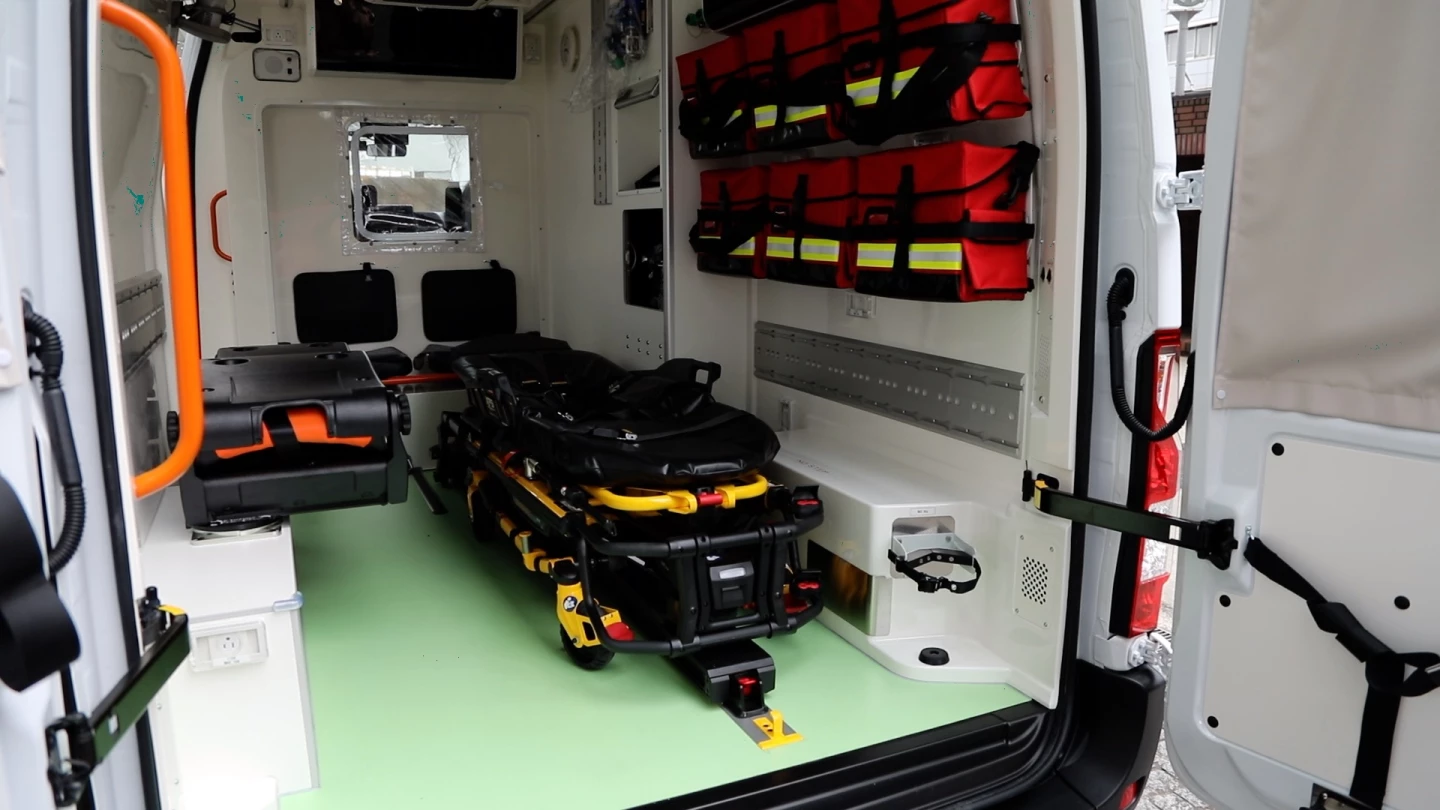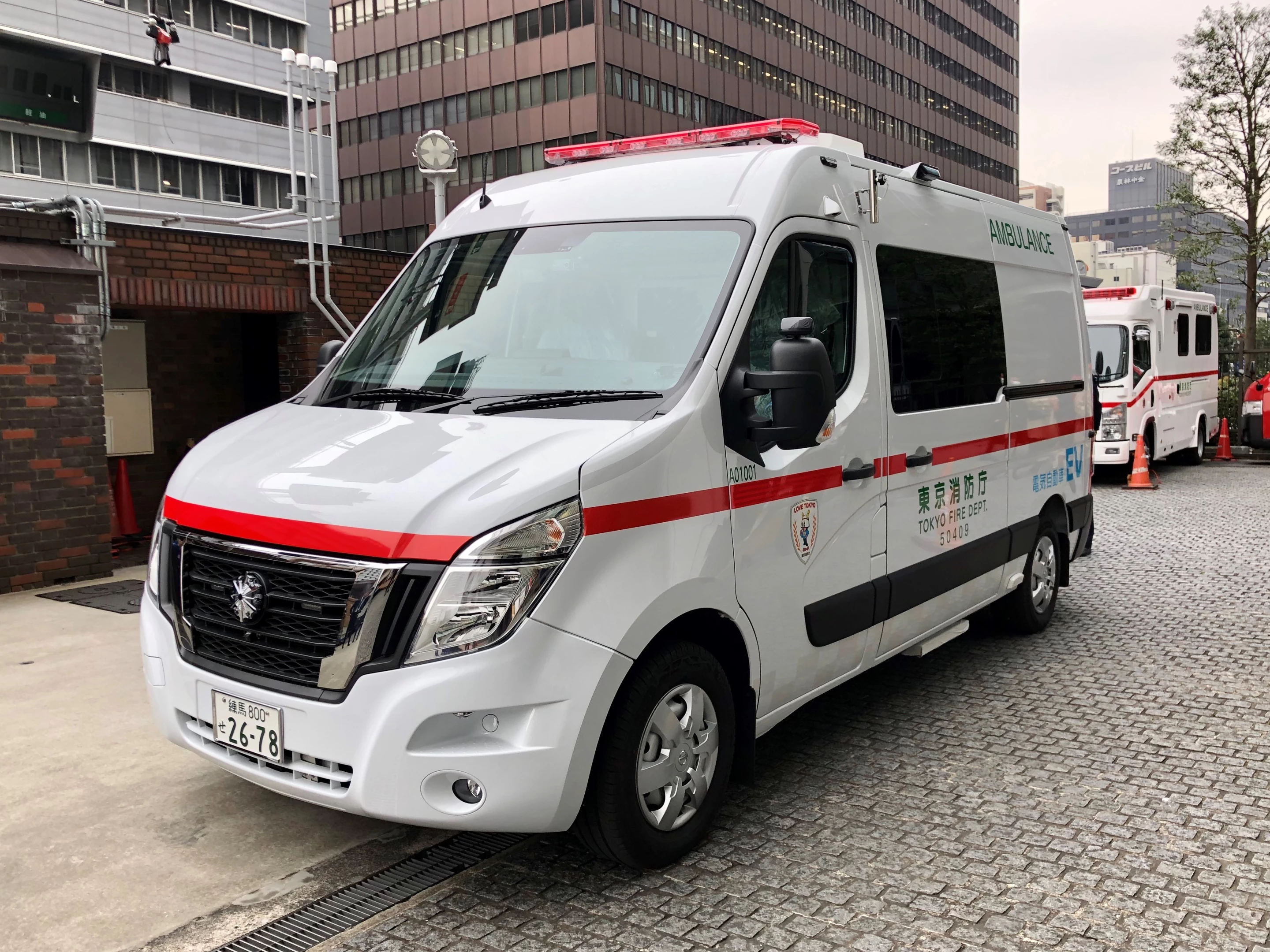The Ikebukuro branch of the Tokyo Fire Department now has an electric ambulance in its fleet of vehicles thanks to a partnership with Nissan, and is based on the NV400 van currently on sale in Europe.
Part of the Tokyo Metropolitan Government's "Zero Emission Tokyo" initiative, the ambulance can accommodate seven crew and passengers and comes fitted with an electric stretcher. The vehicle features two Li-ion battery packs for a total drivetrain capacity of 33 kWh, which is less than a base Leaf.
A second 8-kWh battery is aboard to power the electrical equipment and air conditioning system. The ambulance can also serve as a source of mobile power in the event of an outage or natural disaster.

No per charge range or other performance specs have been given, but the 3.5-ton electric ambulance's motor is reported to deliver 55 kW of power and 220 Nm of torque.
The ambulance was developed by emergency vehicle bodywork specialist Gruau and the actual bodywork undertaken by Autoworks Kyoto.
The Tokyo Fire Dept is not the first to add modern all-electric vehicles to its fleet, earlier this year the Eugene Springfield Fire Dept started a pilot program using Arcimoto's Rapid Responder three-wheeler, and the Austrian city of Linz took delivery of a tactical EV last year. But it is reportedly the first to be deployed in Japan.
Source: Nissan





